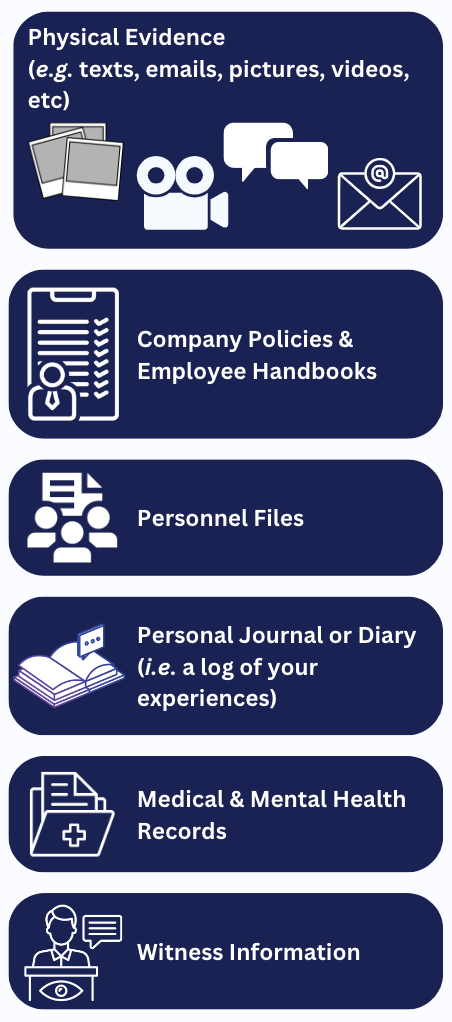Workplace discrimination occurs when an employer mistreats an employee or job candidate in various ways due to said employee or candidate belonging to a protected class. For example, discrimination may involve an employer denying a worthy employee a promotion due to their race. Or it can involve firing an employee because of their religion.
Those are just two examples. If you believe you’ve been the victim of workplace discrimination, but you don’t know how to prove discrimination, keep reading. This overview will explain the importance of gathering evidence when proving discrimination at work.
Types of Evidence for Proving Discrimination
What are the two ways to prove discrimination in the workplace? Essentially, the evidence one might need to gather when proving discrimination can fall into two categories:
- Direct Evidence: Direct evidence is clear evidence that discrimination has occurred. Examples of such evidence may include emails, texts, chat logs, and even employer confessions.
- Circumstantial Evidence: When proving discrimination at work, circumstantial evidence often consists of patterns of behavior or conduct that may strengthen claims of discrimination. For instance, if an employer has a history of denying promotions to employees of a certain race (or gender, or age, etc.), this may qualify as circumstantial evidence.

Gathering both types of evidence can require conducting an investigation. An attorney who understands how to prove discrimination in the workplace could assist with this task.
Documentation and Physical Evidence
An employee may use various types of documentation and physical evidence to support their accusations  when proving discrimination has occurred. Potential examples include:
when proving discrimination has occurred. Potential examples include:
- Company Policies & Employee Handbooks: Company handbooks may contain verbiage indicating the company engages in discriminatory policies. An employee could also use these documents to show that their experiences of discrimination represent a violation of company policies.
- Personnel Files: Personnel files may help prove workplace discrimination by showing a pattern of discriminatory behavior.
- Physical Evidence: Physical evidence can take the form of pictures, video, emails, etc.
- Personal Journals or Diaries: An employee who doesn’t know how to prove discrimination could begin by keeping a log in which they record the dates when they have experienced discrimination, along with a description of their experiences and who was involved (including witnesses).
- Medical & Mental Health Records: Experiencing workplace discrimination may cause an employee to require medical and/or mental health treatment. Medical records could help an employee establish that workplace discrimination had a tangible negative impact on them.
- Witness Information: Eyewitness testimony can indicate an employee isn’t fabricating their claims of discrimination or exaggerating the nature of their experiences.
Proving discrimination in the workplace might not always require gathering all these forms of evidence. That said, the more evidence an employee can provide when filing a claim, the better.
Contact an Attorney for Assistance
Don’t worry if you’re not sure how to prove discrimination in the workplace on your own. You don’t have to. An employment lawyer could assist you in gathering evidence—potentially improving your chances of receiving the compensation for which you may be eligible. Get started by taking the Free Case Evaluation on this page to get connected and speak with an attorney today—at zero cost to you.